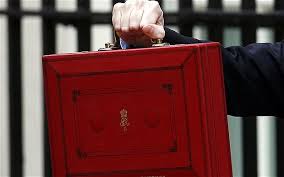

Autumn Budget 2017 – what it means for you
Although there were one or two headliners, there were no significant tax or pensions changes in this Budget that will have any impact for most clients. This means we can help our clients plan for the tax year ahead with confidence and clarity.
As the first Budget of the new Parliament and the first in its new permanent autumn home it now provides welcome breathing space between the announcement of Budget changes and their introduction.
The key points in the 2018/19 tax year as a result of the Budget, and from measures already announced, are:
Pensions
- Lifetime Allowance-There is no limit on the value of pension savings that can be built up by a member. However, if they exceed the lifetime allowance when they are taken, the amount in excess of the lifetime allowance will be subject to a tax charge known as the lifetime allowance charge. The lifetime allowance was introduced on 6 April 2006 (A-Day) but has not remained at the same level and has even reduced in recent years. It is currently £1 million having reduced from £1.25 million and after this budget the pension lifetime allowance will rise to £1,030,000 and reassuringly there are no changes to the pensions funding limits – i.e. the maximum you can pay in, the annual allowance remains at £40,000 and will not be tapered until adjusted income exceeds £150,000.
Income tax-
- The personal allowance and higher rate threshold will increase to £11,850 and £46,350.The dividend allowance will be cut to £2,000 as already announced. In particular, this will hit small and medium sized business owners who take their profits as a dividend. Employer pension contributions will become an even more attractive way of extracting profits from a business. There are no changes to any other income tax bands.
Capital gains tax
- The capital gains tax allowance will increase by £400 to £11,700.
Inheritance tax
- As expected, the IHT nil rate band will remain at £325,000 until April 2021 and the residence nil rate band will increase from £100,000 to £125,000. In total that will mean that, from April, couples can leave assets up to £900,000 to future generation free of IHT.
Trusts
- There will be a consultation published in 2018 to consider the simplification and fairness of trust taxation.
ISAs
- Annual ISA limits stay at £20,000 per person, with a range of different ISAs to choose from. Each has its own rules and limits and is designed for different purposes, whether that’s medium or long term investing, or saving for a house deposit.
Property Stamp Duty
- Stamp Duty Land Tax (not applicable in Scotland) There will be no Stamp Duty Land Tax for first time buyers on properties valued at up to £300,000. Where the first time buyer purchases a property valued between £300,001 and £500,000, they won’t be taxed on the first £300,000 and will be subject to tax at 5% on the excess. Where the property is worth more than £500,000 they won’t receive any relief. These changes will apply to transactions on or after 22 November 2017, where the property will be their main residence. Apparently 95% of all first-time buyers will benefit, with 80% not paying stamp duty.
